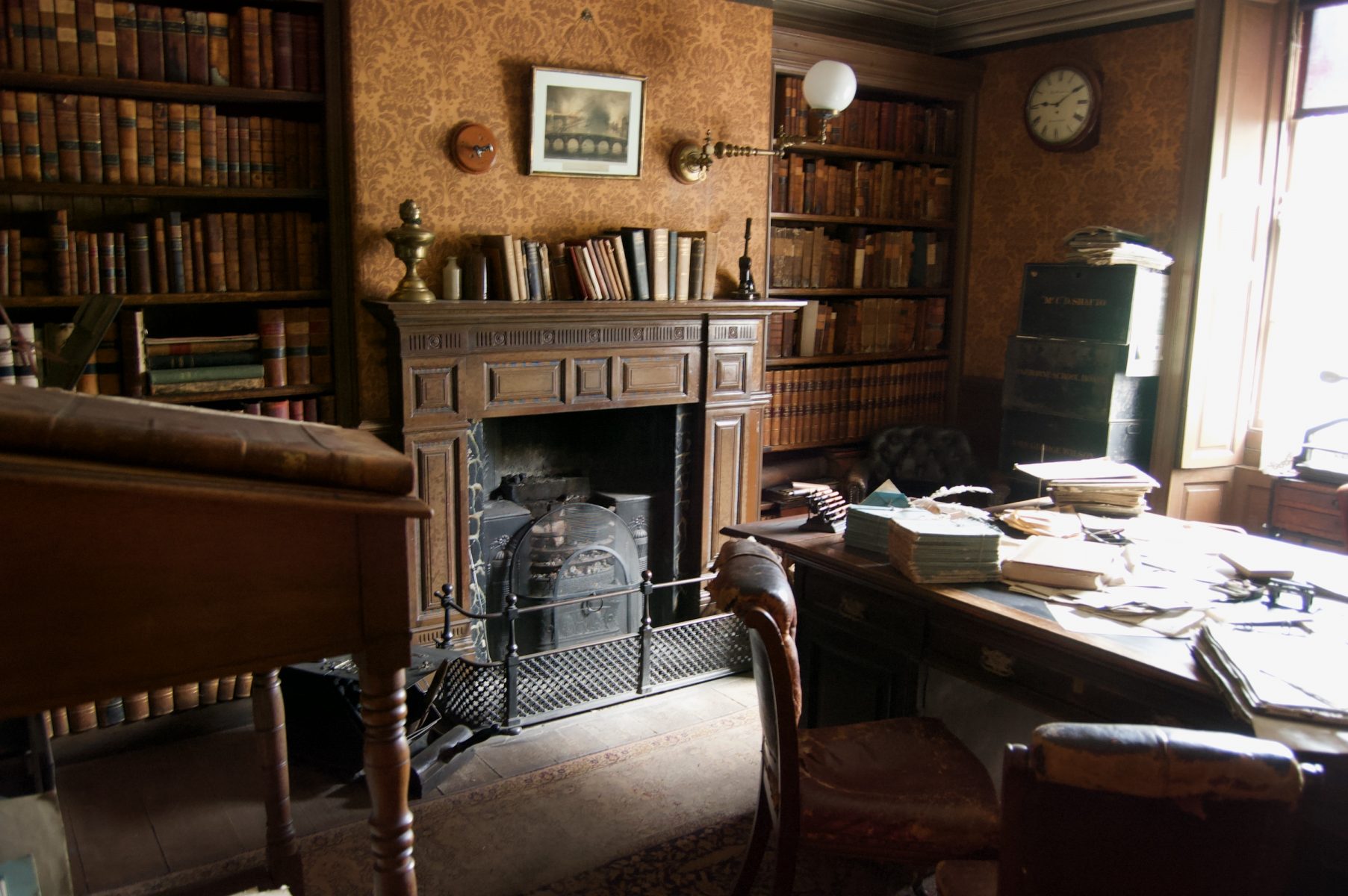No. 5 Ravensworth Terrace at Beamish Museum, County Durham.
Ravensworth Terrace is a row of terraced houses, presented as the premises and living areas of various professionals. Representing the expanding housing stock of the era, It was relocated from its original site on Bensham Bank, having been built for professionals and tradesmen between 1830 and 1845. Original former residents included painter John Wilson Carmichael and Gateshead Mayor Alexander Gillies. Originally featuring 25 homes, the terrace was to be demolished when the museum saved it in the 1970s, reconstructing six of them on the Town site between 1980 and 1985. They are two storey buildings, with most featuring display rooms on both floors – originally the houses would have also housed a servant in the attic. The front gardens are presented in a mix of the formal style, and the natural style that was becoming increasingly popular.
No. 2 is presented as the home of Miss Florence Smith, a music teacher, with old fashioned mid-Victorian furnishings as if inherited from her parents. No. 3 & 4 is presented as the practice and home respectively (with a knocked through door) of dentist J. Jones – the exterior nameplate having come from the surgery of Mr. J. Jones in Hartlepool. Representing the state of dental health at the time, it features both a check-up room and surgery for extraction, and a technicians room for creating dentures – a common practice at the time being the giving to daughters a set on their 21st birthday, to save any future husband the cost at a later date. His home is presented as more modern than No.2, furnished in the Edwardian style the modern day utilities of an enamelled bathroom with flushing toilet, a controllable heat kitchen range and gas cooker. No. 5 is presented as a solicitor’s office, based on that of Robert Spence Watson, a Quaker from Newcastle. Reflecting the trade of the era, downstairs is laid out as the partner’s or principle office, and the general or clerk’s office in the rear. Included is a set of books sourced from ER Hanby Holmes, who practised in Barnard Castle.
Beamish Museum is an open-air museum located at Beamish, near the town of Stanley, in County Durham, England. The museum’s guiding principle is to preserve an example of everyday life in urban and rural North East England at the climax of industrialisation in the early 20th century.
Much of the restoration and interpretation is specific to the late Victorian and Edwardian eras, together with portions of countryside under the influence of industrial revolution from 1825. On its 300 acres (120 ha) estate it uses a mixture of translocated, original and replica buildings, a large collection of artifacts, working vehicles and equipment, as well as livestock and costumed interpreters.
The museum has received a number of awards since it opened to visitors in 1972 and has been influential on other ‘living museums’. It is an educational resource, and also helps to preserve some traditional north-country and rare livestock breeds.


